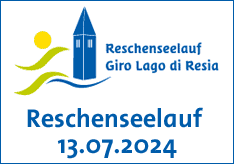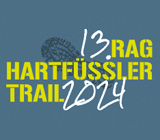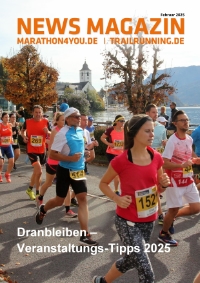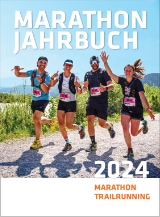marathon4you.de
Nothing is impossible (english Version)
Running through streets that have no numbers or names
There were not always street names in 2 languages. One certainly could not get lost, just follow the crowd. From far away the “Dixi” toilets are recognizable and neat lines of people are already queuing up to use them. The 12 million habitat city is spotless. At this moment my legs are feeling great. No wonder we have been running slightly downhill for nearly 5 kilometers. Cherry trees line the curb and I try to imagine them in full bloom. It’s too late for a photo as I see the bullet train flash by overhead. This is where I see Kay for the first time running along the cordoned off part of the course, trying to take photos. Close by is the 1928 rebuilt train station Lidabashi, that was destroyed in 1923 by the earthquake Kantō which took the lives of approximately 142,800 people.
The next highlight on the marathon sightseeing tour is the home of the Tennō (the Japanese emperor). A devastating fire destroyed the main building of the palace in 1873. In 1888, a new building complex was built, but subsequently destroyed during the Second World War and rebuilt again after the war. The whole area of the imperial court extends over some 7.5 square kilometers. Jogging around the Imperial Palace is popular. Today I see joggers on the five-kilometer course. There are toilets, drinking fountains, changing rooms and even an electronic timing system for the more competitive runner. This is the perfect set-up for office staff should they wish to go jogging before or after work. There is even an annual charity long-distance team-relay race that runs over this course called “Marunouchi Ekidenand” that is organized by the “Japan Times”.
The palace is only open for tourists twice a year, on the 2nd of January and on the Emperors’ birthday. Who knows, maybe a member of the Emperors’ family is running today or drinking green tea in the neighboring tea house.
In 1600 Tokugawa Ieyasu seized power and established a government at Edo (now known as Tokyo) after he forged a family tree to show he was of Minamoto descent. His title, sei-I taishōgun. The Tokugawa shōgunate lasted until 1867. When the Shōgun resigned, he had to leave the palace and abdicated his authority to Emperor Meiji. During the Edo period, effective power rested with the Shōgun, not the emperor in Kyōto. The Shōgun controlled foreign policy, the military and feudal patronage. The role of the emperor was ceremonial, similar to the position of the Japanese monarchy after the Second World War. The Japanese monarchy is the oldest continuous hereditary monarchy in the world. The current ruling Tennō Akihito is the 125th official monarch. Japan also had female Tennō, reigning empresses. These were but only a temporary solution. They all had to resign as soon as a suitable male descendant was available. And today? Today, women in Japan are football World Champions.
The Nijubashi bridge on the Koyo-Gaien square forms the entrance to the inner palace grounds and can be seen from the course. All of Tokyo seems to be on their feet. The 10 Km runners have now reached the finish line and the “Running Doctors” begin their work. After the earthquakes in Tokyo, it was decided by the city council to modernize the infrastructure for cars and trams by building wider roads. The course reminds me of the Alster in Hamburg. The streets today belong to the runners. Hey, in the Shiba Park, belly dancers entertain the runners. The next highlight is not far away. At the refreshment areas there are isotonic drinks, water and bananas. Fruit in Japan is classed as a luxury item. The road on which we run is clean. Nothing glues the shoes to the asphalt, no discarded gels, no littering. Everyone throws their trash into the appropriate cardboard boxes.
After about 12 kilometers, we run past the Zōjōji temple built in 1393 which borders onto the cemetery and its 15 ton bronze bell, which is struck on December 31st, 108 times following the Buddhist doctrine, known as "Joya no Kane", in order to dispel the 108 secular desires that plague us. The two-storey main entrance gate, made in 1836, is the most architecturally appealing feature. The inscribed words on the gate: “If a man walks through this gate, he will be redeemed from three afflictions: greed, hatred and stupidity”. One can only imagine how much power was exercised here before the Tokyo Tower and golf driving range were built. The leading group of elite men, are now coming from the other direction and shortly after we pass the Sengaku-ji Temple.
The story of the 47 Rōnin must be one of the best known in Japan. It is a constantly recurring theme at puppet shows, Kabuki plays, television shows and films. In 1701 Prince Asao, provoked by the courtier Kira, drew his sword in the Castle of Edo, an offence, for which he was forced to pay with his life. His followers became masterless Samurai - "Rōnin". 47 of these followers resolved to avenge their lord. Almost two years later they stormed Kira's home, killed him and carried his severed head back to Asano's tomb in triumph. His honor was restored. However, the 47 Rōnin were naturally condemned to death. According to Buddhist Sengakuji custom, lord and followers are buried side by side. The fountain in which the Rōnin washed Kira's head before presenting it to their lord still stands on the temple grounds.
While Germany is still sleeping, the open-air party is in full swing.
What the Eiffel Tower!
Like the Parisian example, the Tokyo Tower is the tallest self supporting steel tower in the world and is a whopping 13 Meters higher than the Eiffel Tower. It is also 70 years younger. It’s painted bright orange and white and is a big tourist attraction. At kilometer 15 we run through the Shinagawa district and shortly thereafter we reach the turning point. Here at Tōkaidō, during the Edo period, the first post office was opened and it is still in operation today. Some universities and many Japanese companies have established their corporate headquarters here.
For about 5 Kilometers now I have been able to look into the faces of oncoming runners. Pale skin is considered an ideal of beauty, so I fall into this trend. The yuppies! Yesterday we saw them, dynamic young women in stylish business suits and high heels. The men are no different, chic, elegant, young and dynamic, in their black suits with fashionable ties, white shirts and clean leather shoes. All are dressed in dark colors, tone in tone. Nobody stands out or looks conspicuous. So, where are all the old and elderly people? I can’t find any. I even ask myself, are there any retirees in Tokyo?
Back on the run course: Today, I feast my eyes on the costumes the runners are wearing. Strangely, two hours on the road and my head is not buzzing from all the hustle and bustle - quite the opposite. I'm caught by the sensation and look forward to running the remaining 20 kilometers.
And then there was the Fifth Avenue in New York
The sun appears briefly through the clouds as if to show me what the difference a bit of sun makes when photographing. Shortly after 21 Kilometers we reach the elegant district of Ginza which was built in Parisian fashion at the end of the 19th century by two British architects. Thousands of pairs of sneakers cross over diagonal pedestrian crossings, placed so that during the rush hour there are no jams.
On the main shopping street one discovers only expensive and mainly Western brand shops. The department store Matsuzakaya was the first store where customers could enter without having to first remove their shoes. You can find everything here, just like anywhere else in the world. The future is female! Women are still rarely in managerial jobs, but surely that will soon change. But, in one area women are already unconquerable: as consumers and in Tokyo it is easy to fall into the buying frenzy.
Although Japanese designers like Issey Miyake, Yamamoto have international success, the shopping malls are influenced by Western fashion. Gucci and Armani and almost every modern Japanese woman, possesses a piece of Louis Vuitton. Unfortunately, the city is not for bargain hunters. The city is considered one of the most significant in Asia and the most expensive. Nowhere are the real estate prices as high as here. Even in other neighborhoods one can expect o pay €800 for a 20 square meter apartment. In the evening, the district changes itself like a chameleon with millions of illuminations and neon signs just like on Fifth Avenue in New York.
Now I’ve got to go! I managed to find the toilet with the most steps at the Metro station. Each step taken was painful. Whether you speak English or Japanese all the signs are the same for the restrooms. A woman pushes the button on the electric door for me and it opens, which was a good thing, because I don't know if I would have found the “open sesame” button so quickly. I enjoy the brief moment of tranquility, this moment of happiness in this over- crowded city. The silence is suddenly interrupted by gurgling sounds of water from the toilet seat. Gee, I am sitting on a Tokyo washer. On this heated throne I am my own ruler. Buttons like on a circuit board. A jet of water here, a jet of water there and now a blow dry. What can't it do? This place reminds me more of a hospital and I don't think this warm, damp thing would be very decorative in our house back home. Back into the daylight, helpers direct me back into the mayhem, but not before they have checked I have a valid start number.





 Tokio Marathon
Tokio Marathon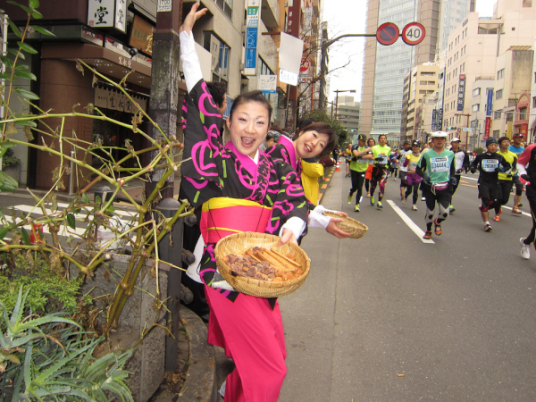

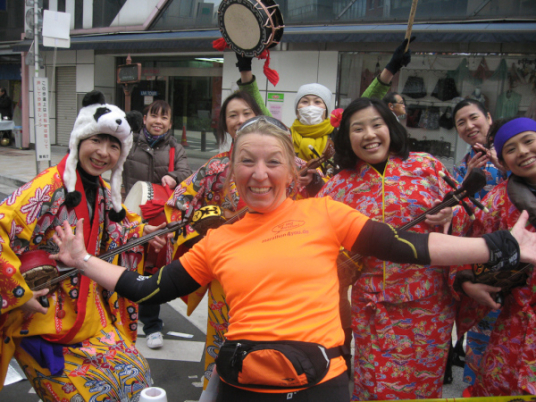




 zur�ck zur �bersicht
zur�ck zur �bersicht